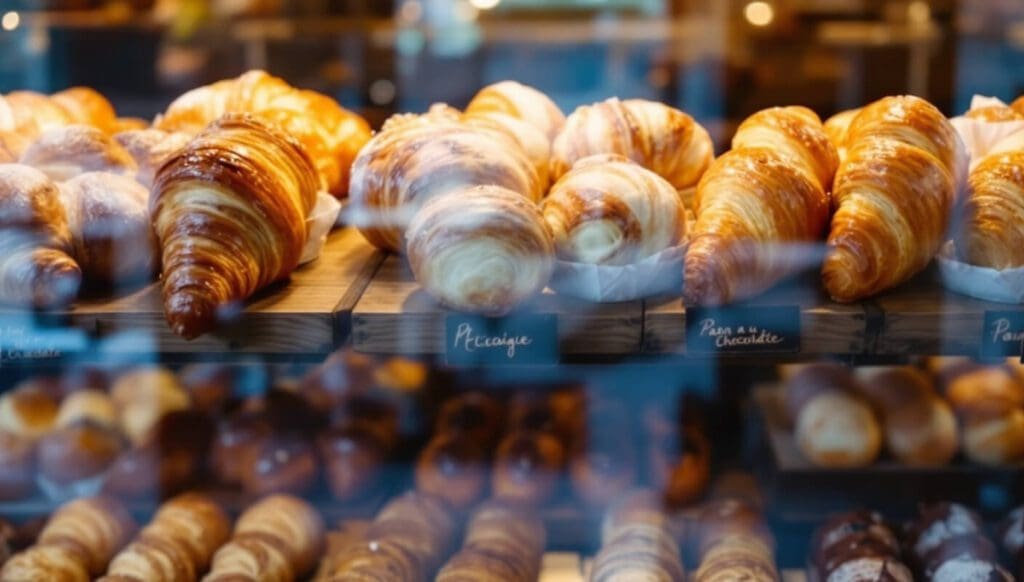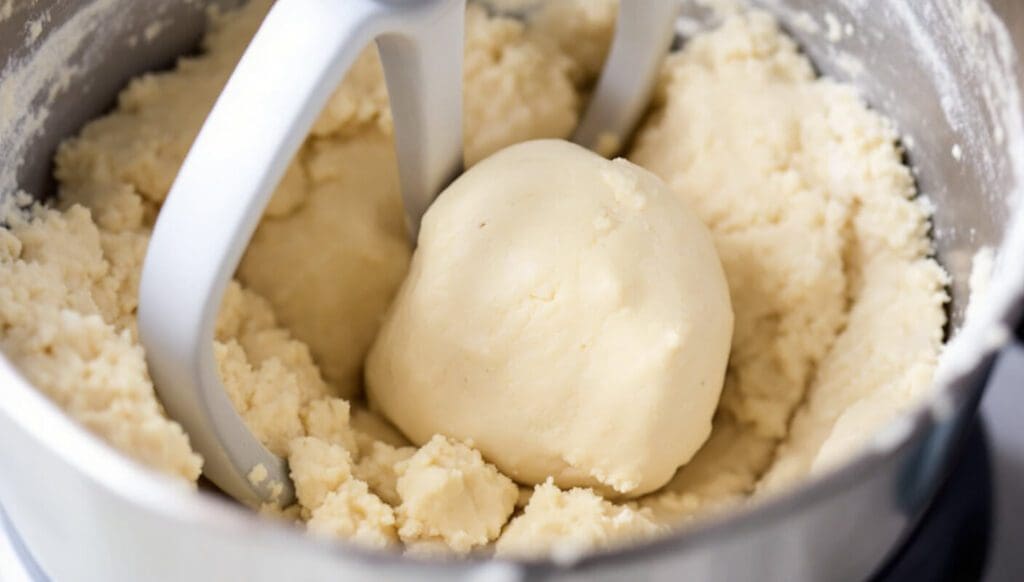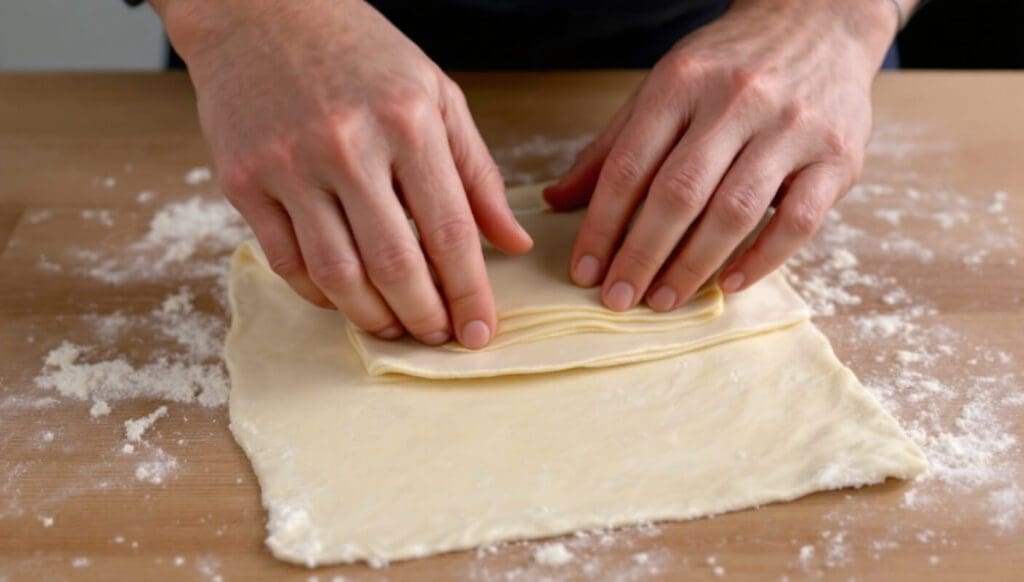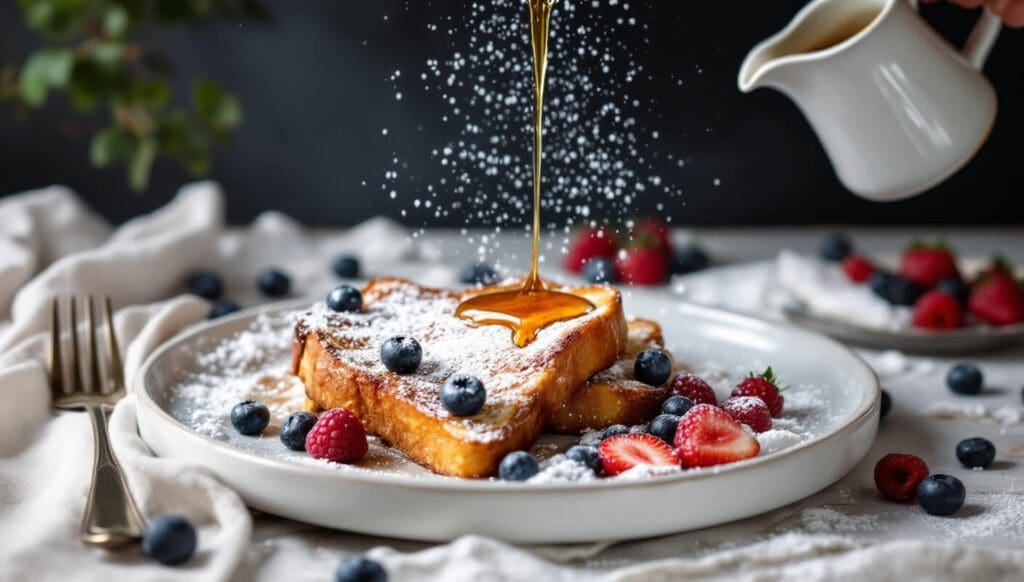Bonjour, food lovers! There’s something undeniably magical about French breakfast recipes that transport you straight to a charming Parisian café. As a professional food blogger who loves creating accessible recipes, I’m thrilled to share my passion for authentic French morning meals that anyone can recreate at home. The beauty of a French breakfast lies in its elegant simplicity—focusing on quality ingredients rather than elaborate preparations. In this guide, we’ll explore everything from classic croissants to perfect tartines that will elevate your morning routine with a touch of French sophistication.
Unlike hearty American or English breakfasts, traditional French morning meals are light, refined, and designed to be savored slowly. Whether you’re planning a special weekend brunch or looking to bring a bit of European charm to your daily routine, these French breakfast recipes will transform your mornings into a delightful culinary experience.
Table of Contents
Traditional French Breakfast
A typical French breakfast (le petit déjeuner) offers a delightful contrast to the hearty morning meals found in many other cultures. Rather than starting the day with a substantial feast, the French prefer a light, simple approach focusing on quality over quantity.

The Staples of a French Morning Meal
- Fresh baguette or other artisanal bread
- High-quality butter (preferably unsalted)
- Fruit preserves or honey
- Coffee, usually café au lait (coffee with hot milk)
- Freshly squeezed orange juice
- Occasionally, a soft-boiled egg
The absence of heavy proteins is notable in traditional French breakfasts. While eggs aren’t completely absent from the French breakfast landscape, they’re far less common than in American or British morning meals. When eggs do appear, they’re often served soft-boiled or as a simple omelette rather than fried or scrambled.
If you’re looking to recreate an authentic French breakfast at home, focus on quality ingredients rather than elaborate preparations. A fresh baguette from a local bakery, premium butter, and homemade jam can transform a simple morning meal into something truly special.
French Bakeries and Pastries
No discussion of French breakfast recipes would be complete without paying homage to the boulangeries and pâtisseries that form the backbone of French breakfast culture. These artisanal establishments are where the magic happens—where flour, butter, and skill transform into morning delicacies that have earned worldwide acclaim.

Viennoiseries: The Crown Jewels of French Breakfast
Viennoiseries occupy the delectable middle ground between bread and pastry. These yeast-leavened baked goods are characterized by their buttery, flaky texture and are integral to the French breakfast experience. Despite their name suggesting Viennese origins, these treats have been perfected by French bakers and are now quintessentially French.
The most famous viennoiseries include:
- Croissants – Crescent-shaped pastries with dozens of buttery, flaky layers
- Pain au chocolat – Rectangular pastries filled with dark chocolate batons
- Pain aux raisins – Spiral-shaped pastries studded with raisins and sometimes filled with custard
- Brioche – Rich, slightly sweet bread with a high egg and butter content
The art of creating perfect viennoiseries requires patience and technique. The lamination process—folding butter into dough repeatedly to create those signature flaky layers—is what gives croissants and their cousins their distinctive texture and appearance.
Tartines: The Simple Sophistication
While viennoiseries might steal the spotlight, the humble tartine remains a breakfast staple in French households. Simply put, a tartine is an open-faced sandwich consisting of a slice of bread (usually baguette) topped with butter and jam, honey, or occasionally, other toppings.

If you’re interested in exploring more breakfast options beyond traditional French fare, check out these top sweet breakfast recipes that pair wonderfully with French-style coffee.
French Breakfast Recipes
Now that we understand the fundamentals of French breakfast culture, let’s dive into some recipes you can recreate at home. These French breakfast recipes range from classic staples to more elaborate weekend treats, all designed to bring a touch of Parisian charm to your morning routine.
Classic French Croissants
While making croissants from scratch requires time and patience, the results are infinitely superior to store-bought versions. This recipe produces 12 medium-sized croissants with that perfect balance of crispy exterior and tender, buttery interior.
| Ingredients | Quantity |
|---|---|
| All-purpose flour | 500g (4 cups) |
| Salt | 10g (2 tsp) |
| Granulated sugar | 55g (¼ cup) |
| Active dry yeast | 7g (2¼ tsp) |
| Cold milk | 150ml (⅔ cup) |
| Cold water | 130ml (½ cup + 1 tbsp) |
| Unsalted European-style butter (for lamination) | 250g (1 cup + 1 tbsp) |
| Egg (for egg wash) | 1 large |
Instructions:
- Make the dough: In a stand mixer fitted with a dough hook, combine flour, salt, sugar, and yeast. With the mixer running on low speed, gradually add cold milk and water. Mix until a dough forms, about 3 minutes. Increase speed to medium and knead for 5 minutes until smooth. Shape into a rectangle, wrap in plastic, and refrigerate for 1 hour.

- Prepare the butter: Place butter between two pieces of parchment paper. Using a rolling pin, pound and roll the butter into a 7×7-inch (18×18 cm) square. Refrigerate until needed.
- Laminate the dough: Roll the chilled dough into an 11×11-inch (28×28 cm) square. Place the butter square diagonally in the center. Fold the corners of the dough over the butter to seal it completely. Roll the dough into a 8×24-inch (20×60 cm) rectangle. Fold the dough like a letter (fold one-third over the center, then the opposite third on top). This completes your first turn. Wrap and refrigerate for 1 hour.

- Complete turns 2 and 3: Remove dough from refrigerator and place on a lightly floured surface with the open seam to the right (like a book). Roll into a 8×24-inch rectangle and fold like a letter again. This is your second turn. Refrigerate for 1 hour. Repeat the process for the third turn.
- Shape croissants: After the final refrigeration, roll the dough into a 8×36-inch (20×90 cm) rectangle, about ⅛-inch thick. Trim edges for a clean rectangle. Cut into triangles with 4-inch bases. Make a small incision at the center of each base, then roll from the base to the tip, gently stretching as you roll.
- Proof: Place shaped croissants on parchment-lined baking sheets, curving the ends slightly inward. Cover loosely with plastic wrap and let rise at room temperature until noticeably puffy, about 2 hours.
- Bake: Preheat oven to 400°F (200°C). Brush croissants with egg wash (1 beaten egg with 1 tablespoon water). Bake for 18-22 minutes until deeply golden brown. Cool on a wire rack.

Pain Perdu (French Toast)
Pain perdu literally means “lost bread” and was traditionally a way to use up stale bread. Today, it’s a beloved breakfast dish that showcases the French talent for transforming simple ingredients into something extraordinary. French toast has many variations worldwide, but the classic French version has a perfect balance of custardy interior and caramelized exterior.
| Ingredients | Quantity |
|---|---|
| Day-old French bread or brioche | 1 loaf (sliced 1-inch thick) |
| Large eggs | 4 |
| Whole milk | 240ml (1 cup) |
| Heavy cream | 120ml (½ cup) |
| Vanilla extract | 1 tablespoon |
| Ground cinnamon | ½ teaspoon |
| Granulated sugar | 2 tablespoons |
| Salt | Pinch |
| Unsalted butter (for cooking) | 2 tablespoons |
| Maple syrup or powdered sugar (for serving) | To taste |
| Fresh berries (for serving) | Optional |
Instructions:
- In a shallow dish, whisk together eggs, milk, cream, vanilla, cinnamon, sugar, and salt until well combined.
- Place bread slices in the egg mixture, allowing them to soak for 2-3 minutes per side. The bread should absorb the custard but not become soggy.

- Heat a large skillet or griddle over medium heat. Add butter and allow it to melt and begin to foam.
- Cook soaked bread slices until golden brown, about 3-4 minutes per side. Work in batches if necessary, keeping cooked slices warm in a 200°F (95°C) oven.
- Serve immediately with maple syrup, powdered sugar, fresh berries, or any preferred toppings.

For the best results, choose the right type of bread for your French toast. While brioche is traditional in France, you can also use challah or even a good quality Hawaiian roll for a unique twist.
Café au Lait
No French breakfast is complete without the perfect café au lait—coffee with hot milk. Unlike the Italian cappuccino or American latte, café au lait has equal parts strong brewed coffee and hot milk, creating a balanced, smooth beverage that’s perfect for sipping alongside your morning pastries.
| Ingredients | Quantity |
|---|---|
| Strong brewed French roast coffee | 120ml (½ cup) |
| Whole milk | 120ml (½ cup) |
| Sugar | To taste |
Instructions:
- Brew coffee using your preferred method. For authentic results, use a French press with medium-dark roast beans.
- In a small saucepan, heat milk until steaming but not boiling. For extra luxury, froth the milk with a handheld frother or whisk.
- Pour coffee and hot milk simultaneously into a large cup or bowl in equal proportions.

- Add sugar if desired and serve immediately.
Chef’s Tip: In France, café au lait is traditionally served in a wide bowl rather than a mug, allowing for the luxury of dipping your morning croissant or baguette.
Nutrition Information
While French breakfast foods are undeniably delicious, it’s helpful to understand their nutritional profile, especially if you’re adapting French breakfast recipes to fit into a balanced diet.
| Item | Calories | Fat | Carbs | Protein |
|---|---|---|---|---|
| Croissant (1 medium) | ~230 | 12g | 26g | 5g |
| Pain au Chocolat (1) | ~300 | 17g | 34g | 6g |
| Baguette (1 oz slice) | ~75 | 0.5g | 15g | 3g |
| Café au Lait (1 cup) | ~80 | 4g | 6g | 4g |
| Pain Perdu (1 slice) | ~320 | 15g | 35g | 10g |
To create a more balanced French-inspired breakfast, consider these healthier adaptations:
- Add fresh fruit to your breakfast spread
- Use whole grain bread for tartines
- Opt for low-fat milk in your café au lait
- Enjoy viennoiseries as an occasional treat rather than daily
Frequently Asked Questions
What is a typical French breakfast?
A typical French breakfast is light and simple, consisting of a baguette or pastry (like a croissant), butter, jam, and coffee or hot chocolate. Unlike American or English breakfasts, French breakfasts rarely include eggs, meat, or heavy dishes. The focus is on fresh, high-quality ingredients enjoyed at a leisurely pace.
Why do the French eat sweet things for breakfast?
The French tradition of sweet breakfasts developed partly out of practicality. Sweet items like pastries and bread with jam provide quick energy to start the day, while saving more elaborate cooking for lunch and dinner, which are traditionally the main meals in France. This approach also allows for a quick morning meal before heading to work or school.
What time do French people eat breakfast?
French people typically eat breakfast between 7:00 and 8:30 AM on weekdays, although this can vary based on individual schedules. Weekend breakfasts might be later, around 9:00 or 10:00 AM, and often more leisurely. In some cases, particularly on weekends, the French might skip breakfast entirely in favor of a late morning brunch.
Can I prepare French breakfast recipes in advance?
Yes, many French breakfast items can be prepared or prepped in advance. Croissant and brioche dough can be made the day before and refrigerated overnight for baking in the morning. Tartine toppings like homemade jam can be prepared weeks in advance. Even pain perdu (French toast) batter can be mixed the night before and refrigerated to save time in the morning.
What’s the difference between French toast and American toast?
French toast (pain perdu) is bread soaked in an egg and milk custard mixture then fried, while American toast is simply sliced bread that’s been toasted and topped with butter, jam, or other spreads. The French version was originally created as a way to use stale bread, transforming it into a rich, custardy breakfast dish. American toast is quicker and simpler, focusing on the toasting process rather than a custard soak.
Conclusion
Embracing French breakfast recipes is about more than just the food—it’s about adopting a philosophy that celebrates quality over quantity and encourages taking time to enjoy life’s simple pleasures. The French approach to le petit déjeuner reminds us that breakfast doesn’t need to be complicated or heavy to be satisfying—sometimes, a perfectly baked croissant and a good cup of coffee are all you need to start your day on the right note.
Whether you’re an experienced baker ready to tackle homemade croissants or simply looking to upgrade your morning routine with simple tartines, I hope these French breakfast recipes inspire you to bring a touch of Parisian café culture into your home. Remember that while technique is important, the true secret to French breakfast is using the best ingredients you can find and taking the time to savor each bite.
For more breakfast inspiration that pairs beautifully with these French recipes, check out my high protein oatmeal recipe for a nutritious option that complements the lighter French breakfast style.
Have you tried making any of these French breakfast recipes at home? Do you have a favorite French morning treat that I missed? I’d love to hear about your experiences in the comments below. Bon appétit!



Comments are closed.